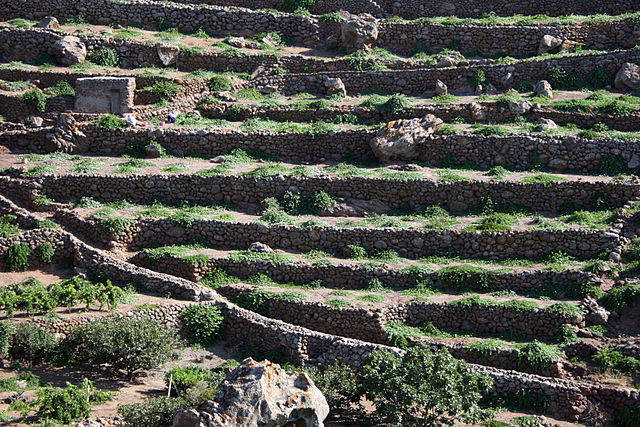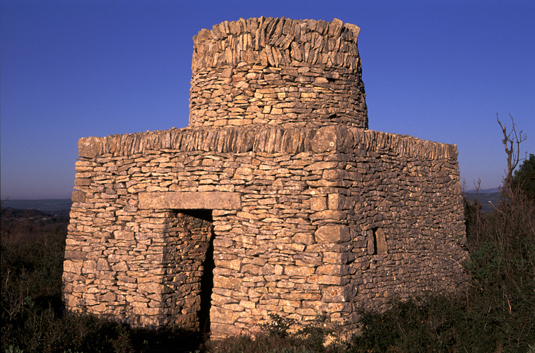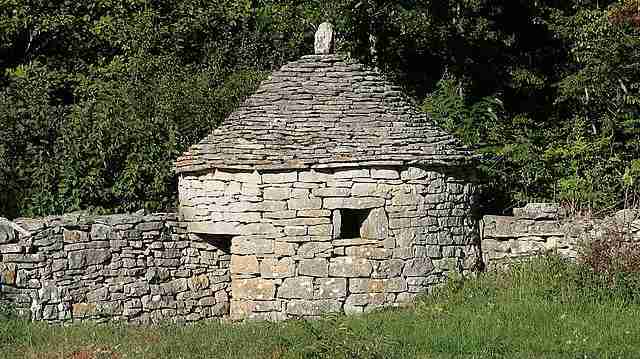The art of dry stone walling, knowledge and techniques
The art of dry stone walling is an ancient artisan practice that plays a fundamental role in the prevention of landslides, floods and avalanches. And also in the fight against erosion and desertification of the land, increasing biodiversity and creating ideal conditions for agriculture. These dry stone structures are made in perfect harmony with the environment. And the technique used represents a harmonious relationship between man and nature. It is a millenary technique that has had different uses over the course of history and depending on the region. This practice is still widespread today in Italy, Croatia, Cyprus, France, Greece, Slovenia, Spain and Switzerland.

Especially in coastal areas and islands, dry stone walls are so common that their historical and social importance is sometimes forgotten. Dry stone walls are often used in agriculture to create terracing, as they serve to protect the portions of land obtained from the slopes. In other areas the dry stone wall, especially on sea coasts, serves to protect crops from atmospheric agents.
Risk of disappearing…
However, dry stone walls are slowly disappearing, mainly due to the lack of skilled labour. And also because the use of mechanized means in agriculture sees them as an obstacle. The loss of dry stone walls does not only mean the cancellation of a testimony of our history. The disappearance or rarefaction of these buildings negatively affects the landscape and the environment. In fact, in the dry stone walls a rich fauna and flora survive, they are also an important element of ecological and landscape diversification.
To protect a tradition that unites many European Countries, UNESCO has registered, in 2018, “The Art of dry stone walling, knowledge and techniques” in the list of Intangible Cultural Heritage of Humanity as it represents a harmonious relationship between man and nature . The recovery of the drywall technique constitutes a significant step in terms of landscape. And also a contribution to the spread of a culture of building using the materials of nature. Values recognized as an integral part of the cultural heritage of people.

Not only stone on stone… but the art of dry stone walling!
Building stone walls, perhaps on a steep slope, is not something that can be improvised. Behind there is a lot of experience, techniques and knowledge handed down for centuries. Building a dry stone wall also means possessing an aesthetic awareness that respects the landscape. Because the walls “embroider” the hills, mountains and valleys with extraordinary harmony and balance.
Someone might say that it is a simple art. Because basically it involves arranging the stones one on top of the other, without using other materials. In reality, in order for the wall to be stable, careful selection and wise positioning of the stones are required. It is necessary to know how to evaluate the type of soil, the soil conditions, the slope, the greater or lesser presence of water. In short, it is a real “art”. An art of building precious structures that play a fundamental role in preventing landslides, floods and avalanches. Allowing man to live and produce in a harmonious relationship with the territory.

If we also think that a craftsman takes a day’s work to build a linear meter of wall 1.5 meters high, dry stone walls throughout Europe are worth at least 5 million years of work, without considering maintenance and reconstruction. It is a fact that serves to make us aware of how much effort has been spent to tame our planet. Make it arable and habitable: it invites us to respect and asks us to take care of it.
Resume
The art of dry stone walling concerns all the knowledge related to the construction of stone structures by piling stones on top of each other. It is one of the first examples of human manufacture and is present in many European Countries. Both for residential purposes and for purposes related to agriculture. In particular for the terraces necessary for cultivation in particularly steep areas. Dry stone walls also play a vital role in the prevention of avalanches, floods, in combating land erosion and desertification. The practice is in fact adapted to the particular conditions of each place where it is used.
